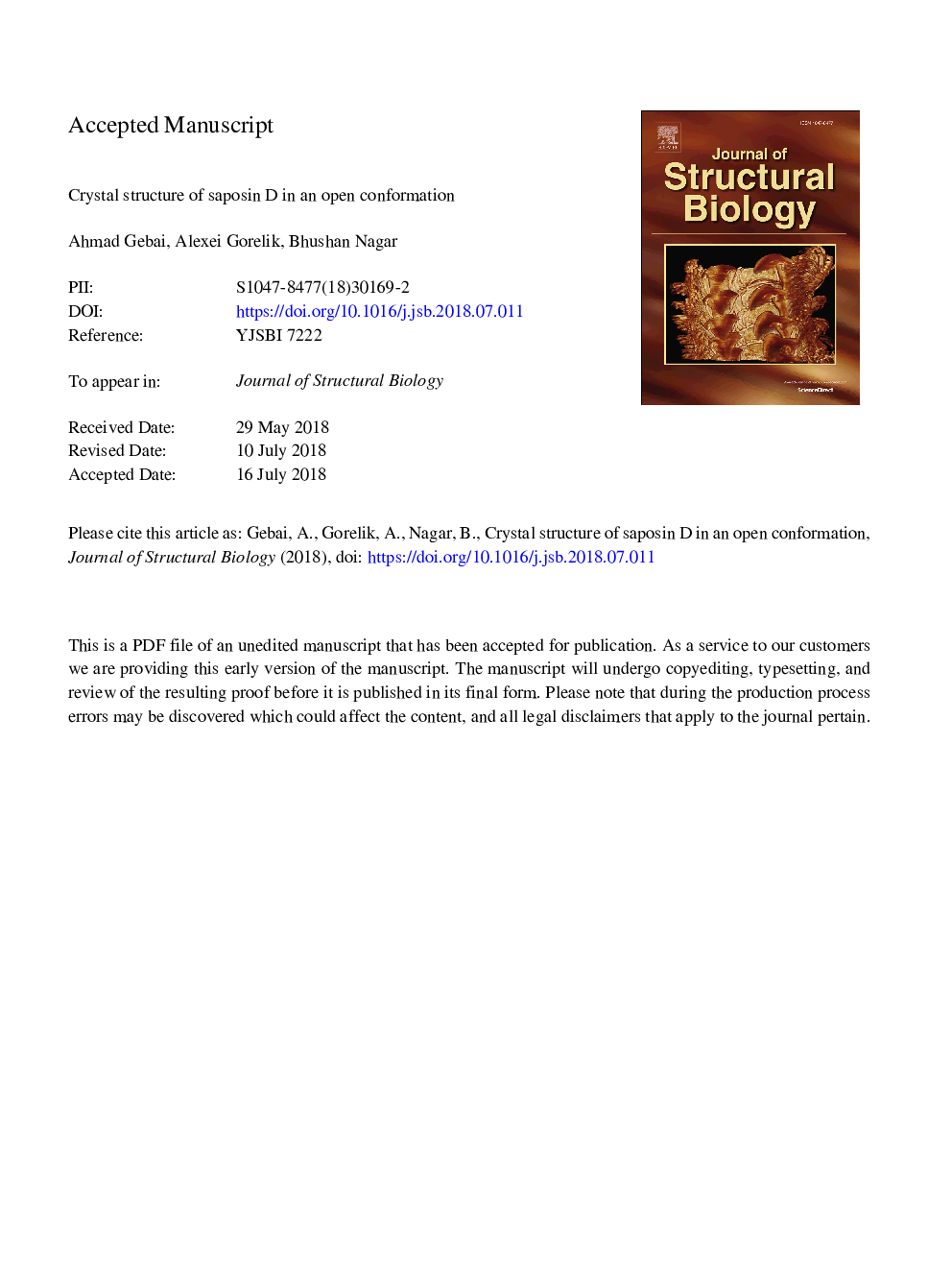| Article ID | Journal | Published Year | Pages | File Type |
|---|---|---|---|---|
| 11022580 | Journal of Structural Biology | 2018 | 20 Pages |
Abstract
Saposins are accessory proteins that aid in the degradation of sphingolipids by hydrolytic enzymes. Their structure usually comprises four α-helices arranged in various conformations including an open, V-shaped form that is generally associated with the ability to interact with membranes and/or enzymes to accentuate activity. Saposin D is required by the lysosomal hydrolase, acid ceramidase, which breaks down ceramide into sphingosine and free fatty acid, to display optimal activity. The structure of saposin D was previously determined in an inactive conformation, revealing a monomeric, closed and compact form. Here, we present the crystal structure of the open, V-shaped form of saposin D. The overall shape is similar to the open conformation found in other saposins with slight differences in the angles between the α-helices. The structure forms a dimer that serves to stabilize the hydrophobic surface exposed in the open form, which results in an internal, hydrophobic cavity that could be used to carry extracted membrane lipids.
Related Topics
Life Sciences
Biochemistry, Genetics and Molecular Biology
Molecular Biology
Authors
Ahmad Gebai, Alexei Gorelik, Bhushan Nagar,
